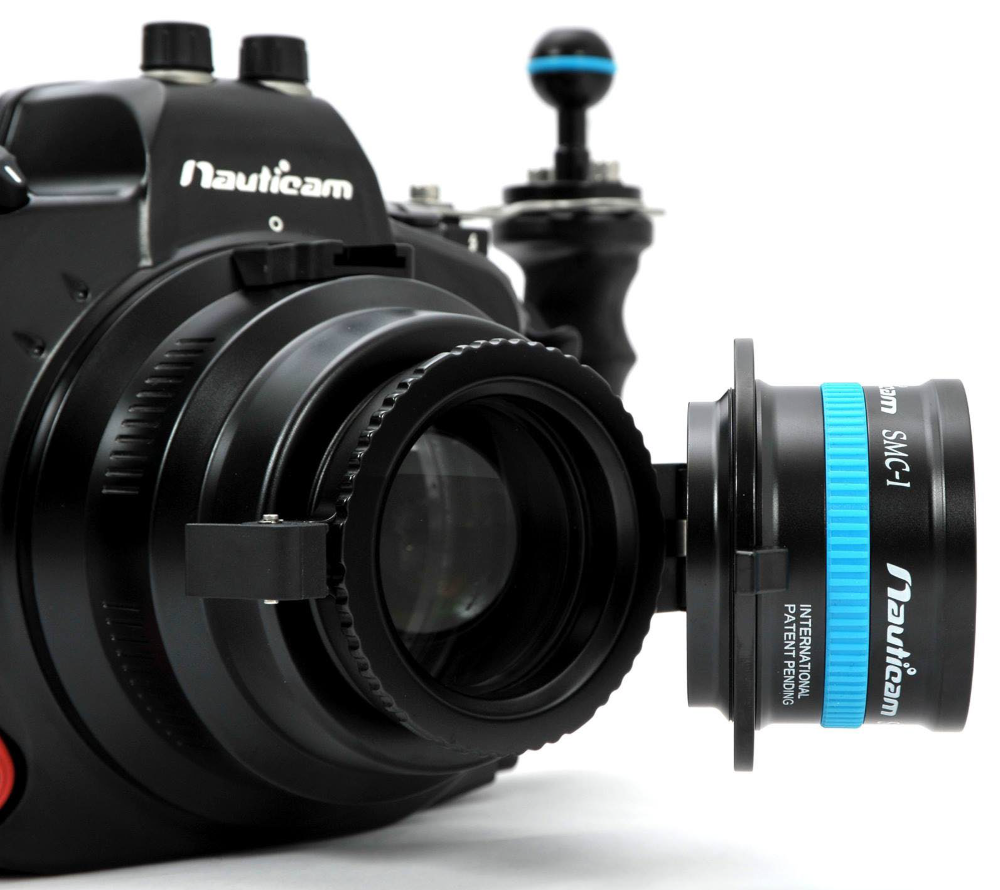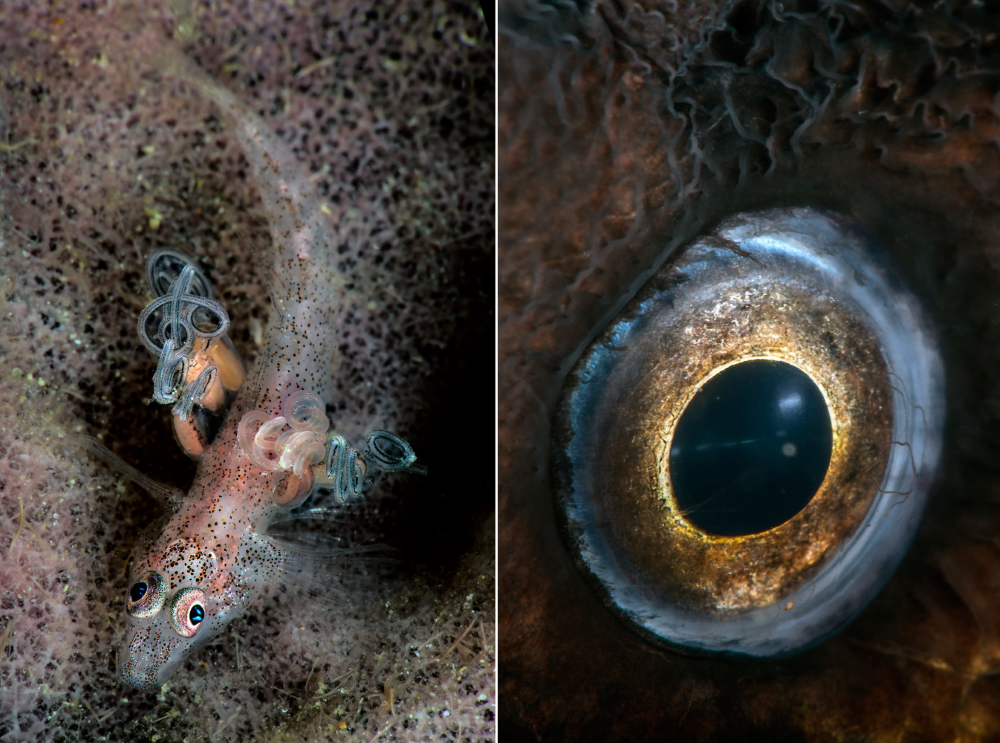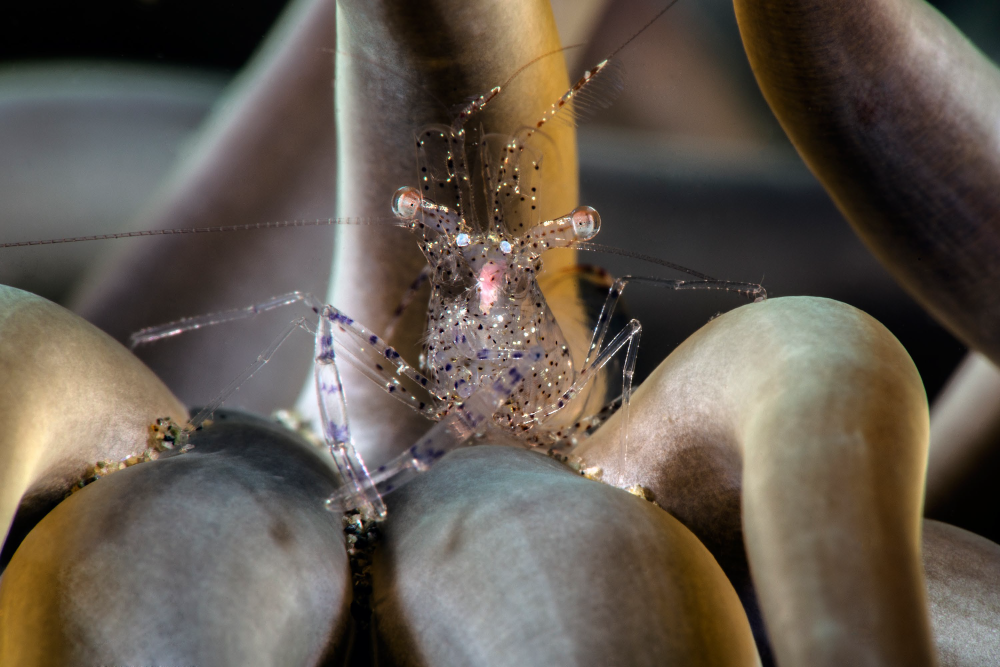
Nauticam SMC-1 wet-lens
Recently I decided to change my wet-lens for macro photography. The Nauticam SMC-1 was already a strong candidate in my mind. I have been a long time user and owner of both the
Subsee and the pricier Macromate wet-lenses which are both are great quality and powerful +10 dioptre afocal lenses. I had read several reliable and trusted reviews about the Nauticam SMC-1. The sample photos there showed clearly the high quality results you can get by using the Nauticam SMC-1. For example the very sharp inside on-focus areas and amazing bokeh, for me, demonstrated clearly the capability of this lens. I still had one question in my mind. How well would this lens perform together with my 105vr Nikon? I would have had the same question
if I possessed a Canon 100 as the Nauticam SMC-1 has been especially developed to best serve these two powerful macro lenses.
I was especially interested in use of maximum aperture (minimum depth of field), trying to frame correctly a tiny subject, scares ambient lighting and moving subject? In other words, would such powerful amount of magnification be convenient and handy or would it have turned out to be a drawback during the pre-shooting phase when speed and readiness are essential to prevent losing the correct framing and focus of a microscopic subject? Well, I have been really surprised and pleased to see how much easier it is to correctly frame tiny subjects without a high colour contrast using the Nauticam SMC-1 compared to the lenses.

I have been using before, and how friendly it is to frame composition with this lens. These results have been made possible thanks to the great build quality of the optical elements along with
the amazing design of the whole group of lenses. Optical aberrations that you would normally find in this kind of product are really reduced to a minimum for such a powerful magnifying device. Finally the big diameter of the lens (big lens means big light but also big weight) is directly linked to the incredible brightness of this piece of glass. After about 20 dives in the Mediterranean
I had the chance to test it in one of the supermacro paradises of the world, The Philippines. It was here that the biggest problem of this lens surfaced! I wanted to illuminate the subject with my strobe in order to obtain a more oblique lighting; well, I ended up with some very annoying “flares” showing up in the picture. I soon found the culprit to be the big diameter of the lens allowing in so much light, that it was even catching unwanted light and allowing it into the camera. To solve this annoyance I used a little Italian ingenuity, a lot of experience from my “dry” photography.
The solution was to buy a 67mm lens hood that would perfectly fit the 67mm thread of the Nauticam SMC-1 to be able to say goodbye to the flares.
In the Philippines I was also given the opportunity to try other lenses, competitors of Nauticam, and I was really curious and hopeful to find some good rivals for the SMC-1. I must say that I really wanted to find something wrong with the Nauticam. So far the price sets the SMC-1 among the priciest wetlenses available on the market at the moment. I have seen photos shot with competitor
lenses, both macro and supermacro, and looking at those photos I was convinced that the overall quality was more than acceptable. That was until live trials in the field showed them to be really the worst results you can expect from a wetlens! They were all almost unusable during the pre-shooting phase without even pushing the magnification too much and a lot of optical aberrations that would make the subject acquisition in the DSLR viewfinder almost impossible.
WORDS and PICTURES by Mimmo Roscigno


















